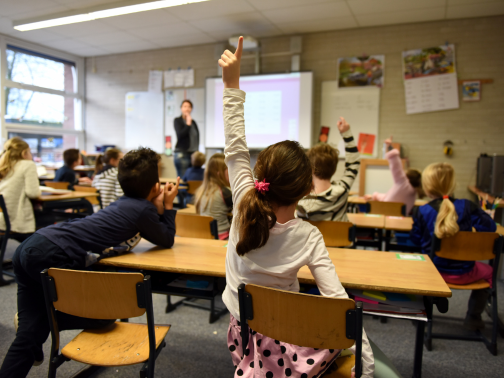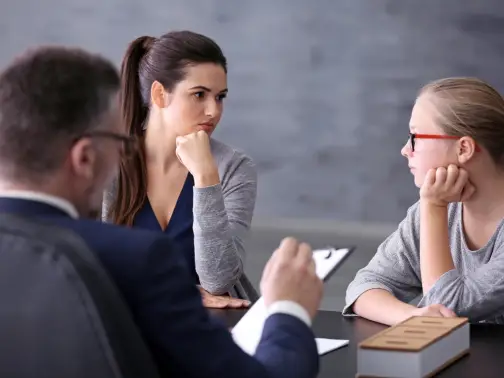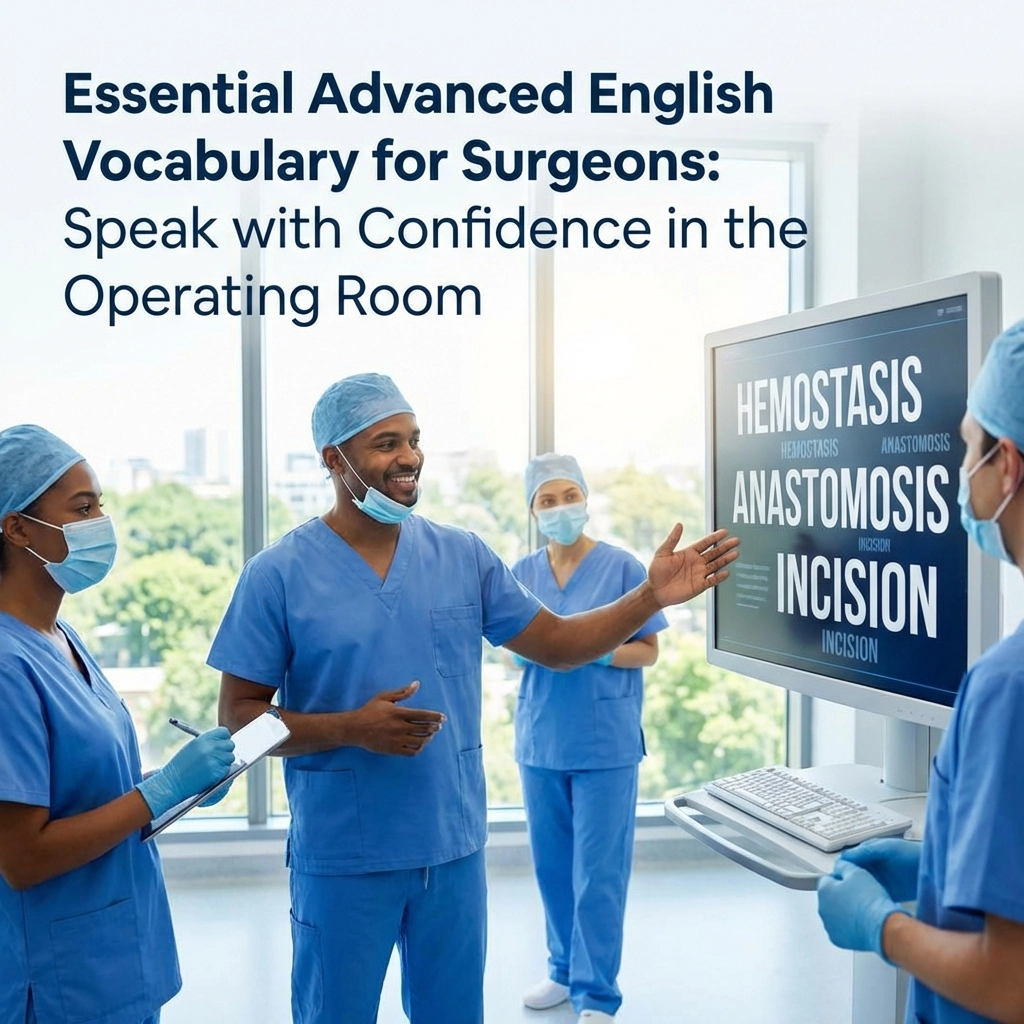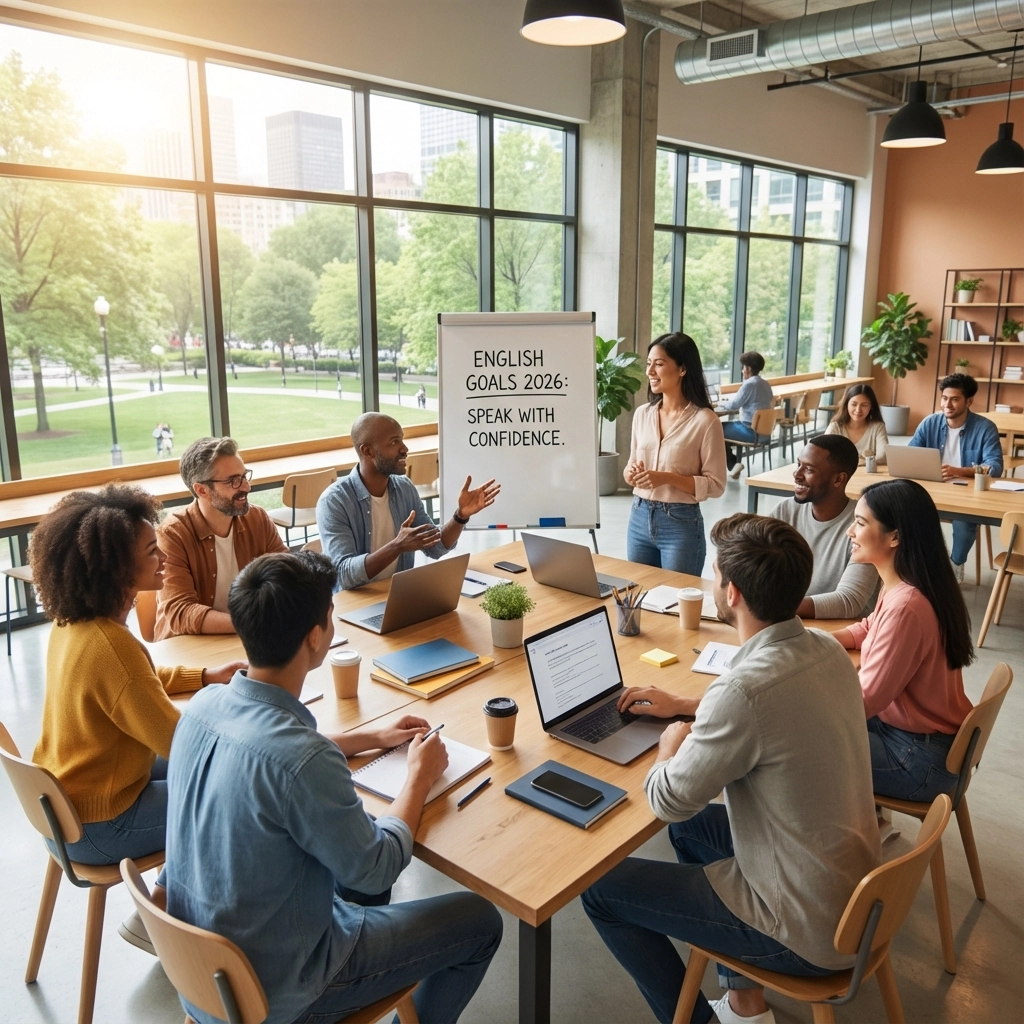Contents
Toggle
Meet David De’ Ath, founder, editor, and writer at Wonderful World English. With his extensive background as an English teacher, David provides valuable insights and practical tips on ESL for students and teachers alike.
Embarking on a career in education comes with its fair share of challenges and excitement, particularly for those just stepping through the classroom door for the first time.
Navigating the first year of teaching is akin to learning to dance—a symphony of steps that require patience, practice, and a supportive ensemble.
For the new educators, it’s a year filled with opportunity, one where the seeds of their future classrooms are planted and nurtured through dedicated preparation, effective classroom management, and innovative teaching strategies.
First-year teachers should make sure to prepare for the year ahead by understanding the curriculum and planning accordingly. Promoting creativity and positivity and offering feedback are all essential as well. Collaborating with parents and other teachers is also a great way to ensure a positive transition to the world of teaching.
As these first-year teachers lay the foundation of their educational journey, they will not only contribute to the growth of their students but also evolve in their professional lives.
Valuable practices such as developing thorough lesson plans, engaging in continual assessment and feedback, and forging a collaborative relationship with parents can significantly enhance their teaching experience.
And most importantly of all, maintaining self-care and a positive outlook helps in dealing with the inevitable hurdles and celebrating each remarkable milestone achieved along the way.
Key Takeaways
- First-year teachers can find success by planning ahead, embracing creativity, and providing constructive feedback.
- Building partnerships with parents and maintaining self-care are crucial for a positive teaching experience.
- Overcoming challenges is part of the growth process, with celebration of progress being essential for teacher and student development.

Guidance for New Teachers
For any new teacher, congratulations!
We wish you all the best in your new profession, and the tips below are to help you on your journey.
Now let’s look at ten crucial pointers for first-year teachers:
1. Prepare for the Semester
Jumping into your first semester as a new teacher is an exciting, albeit daunting, adventure.
To make this journey smoother and more rewarding, a bit of preparation goes a long way.
Here’s a rundown on getting prepped for that all-important first year:
Imagine stepping into your classroom.
Before anything else, take a moment to set clear goals and expectations for yourself and your students.
Think about what you want to achieve academically.
Every school is different – some focus more on exams, others on coursework.
Understanding what your students expect, and vice versa, is crucial.
This clarity will help you tailor your teaching approach, keeping everyone on track and motivated, even when the going gets tough.
Now, let’s talk about your support system.
Teaching is super important to build a network of fellow educators, so be sure to reach out, ask for advice, share experiences.
Having experienced colleagues in your corner can be a game-changer as they can offer guidance, support, and those golden nuggets of wisdom that come from years in the trenches.
It’s a great way to boost your confidence and help you navigate the new waters.
And finally, let’s not forget the physical space – your classroom.
This is your stage, your arena.
How it’s set up can massively influence the learning experience, so take the time to organize and decorate it in a way that reflects your teaching style.
Do you like rows, pairs, or clusters of desks?
I personally go for pairs, but it’s all about what works for you and your students.
A well-organized, welcoming classroom sets the tone for a positive learning environment, and always, always have your teaching materials and supplies ready to roll.
Remember, teaching is a journey, and like any journey, the better prepared you are, the more enjoyable and successful it’ll be.
So gear up and get ready to inspire some young minds!

2. Focus on Classroom Management
Managing a classroom effectively is a key skill for any teacher, and it’s something that can make a world of difference in your teaching experience and your students’ learning.
Here are some friendly and practical tips to help you rock at classroom management:
- Set Clear Rules and Routines: It’s super important to lay down the law (in a nice way, of course!) from the get-go. Make sure your students know what’s expected of them and stick to it. This helps create a structured, productive environment. New teachers, take note: be consistent with your expectations. A sprinkle of spontaneity is fun, but keep it structured for the most part to keep everyone’s stress levels in check.
- Build a Strong Rapport: You know how you feel more comfortable with a friend than a stranger? That’s the vibe you want in your classroom. Take the time to get to know your students, show genuine interest in their lives, and build that friendly, respectful relationship. It pays off big time: students who like and respect you are more likely to behave well and succeed academically.
- Handle Discipline with Care: Sooner or later, you’ll have to deal with some tricky situations. Stay calm, stay assertive. Remember those rules you set? Stick to them. But don’t just jump to punishment – focus on constructive solutions. It helps maintain respect and teaches students valuable lessons about handling emotions and consequences.
So, there you have it – a little guide to making your classroom a well-oiled learning machine. And hey, if you’re hungry for more insights, check out the link below!
Related: Why is Classroom Management Important? – Teacher’s Answer

3. Craft a Curriculum
Being a teacher comes with the big responsibility of knowing your stuff inside out!
Understanding the curriculum and crafting lessons that not only meet educational standards but also engage and inspire students is key to a successful classroom.
Let’s break down what this involves in a friendly, easy-to-digest way:
First up, get cozy with the curriculum and course books.
Each school, each district, has its own set of standards and objectives, so as a new teacher, diving into these will be your roadmap for planning effective lessons.
It’s not just about covering topics; it’s about ensuring your students hit those key learning goals and objectives.
Now, let’s talk lesson plans.
They need to be more than just informative—they should be downright captivating.
Think about it: a lesson that grabs your students’ attention and sparks their imagination is a lesson they’ll remember.
The more engaged they are, the more they’ll focus and retain information.
And let’s face it, everyone prefers a classroom buzzing with excitement over one where everyone’s watching the clock!
Mix things up with games, videos, songs, and other creative materials.
But here’s the real secret sauce: differentiated instruction.
Recognize that your classroom is a mix of individuals, each with their own strengths, weaknesses, and learning paces.
There’s no magic ‘one size fits all’ approach.
Tailoring your teaching to meet these diverse needs means every student gets a fair shot at success.
This approach not only boosts learning outcomes but also makes the classroom experience more enjoyable and inclusive for everyone.
So, in a nutshell, being a teacher is about being prepared, being engaging, and being adaptable.
It’s a challenging but incredibly rewarding journey, shaping the minds and futures of your students.

4. Apply Different Strategies
As a teacher, having the right strategies up your sleeve is like having a secret weapon.
It’s about making your lessons engaging, interactive, and effective.
Here’s a quick look at some key teaching strategies to consider:
- Active Learning Techniques: Want to keep your students hooked? Dive into active learning. This means hands-on activities, group discussions, presentations, interactive exercises – the works. It’s all about making your lessons more enjoyable and, importantly, impactful.
- Embrace Technology: Tech tools are a treasure trove for teachers. Apps, videos, games – there’s a lot out there to jazz up your lessons. But remember, technology is just a tool, not the whole toolbox. Use it to make your lessons more relevant and engaging, not as the sole focus.
- Encourage Participation: You’ll notice some students are naturally more active than others. That’s perfectly normal. But it’s your chance to coax the quieter ones out of their shells. Encourage all students to share their thoughts and ideas in a comfortable environment. It does wonders for their confidence and critical thinking skills.
In short, mix active learning with a dash of tech and a culture of participation.
That’s your recipe for a vibrant, effective classroom!
5. Regularly Assess your Students
Assessing students and providing constructive feedback is a vital part of a teacher’s role.
It’s not just about grading papers; it’s about understanding where each student stands in their learning journey and guiding them forward.
Using a variety of assessment methods is key.
Think tests, projects, presentations, quizzes – these diverse forms help you gauge your students’ strengths and weaknesses in different areas.
It’s like getting a 360-degree view of their learning, which is super helpful for planning future lessons.
Then comes the feedback part. It’s not just about telling students what they did wrong.
It’s about highlighting what they did right, too, and guiding them on how to improve.
This approach keeps them motivated and not overwhelmed.
Remember, feedback should be specific and timely to really help students strive for better results.
Monitoring progress is also crucial.
Keep an eye out for those who might be struggling or too shy to ask for help.
By tracking their progress, you can adapt your teaching strategies to meet their needs.
In short, assessment and feedback are about much more than grades; they’re about nurturing a learning journey for each student.

6. Collaborate with Families
For new teachers, extending learning beyond the classroom walls is crucial, and collaborating with parents and guardians is a key part of this.
Establishing a positive line of communication with them can significantly enhance a student’s academic progress.
Building a healthy relationship with parents and guardians starts with open and regular communication.
Don’t be shy to exchange emails or phone numbers.
Keeping them in the loop about their child’s progress, achievements, and areas needing improvement is vital.
This transparency allows parents to support their child’s learning journey at home, boosting their development and confidence in class.
Getting parents involved in the learning process is also beneficial.
Inform them about their child’s challenges as well as successes.
Encourage them to participate actively in their child’s education, whether it’s through helping with homework or getting involved in school activities, projects, and events.
This inclusion can create a supportive and holistic educational environment for the students.
Lastly, addressing parental concerns is an integral part of a teacher’s role.
Listen with empathy and understanding.
Collaborating with parents to find practical solutions not only resolves issues but also strengthens the trust and partnership between the school and families.
All these efforts ultimately converge to create a supportive and effective learning environment for the student.

7. Avoid Burnout
Teaching is incredibly rewarding, but let’s face it, it’s also super demanding.
So, self-care is a must for teachers to avoid burnout.
Here’s a friendly guide to staying on top of your game by taking care of yourself:
First, managing stress and avoiding burnout is crucial.
Teaching takes a lot of energy, so make sure to take breaks, indulge in your hobbies, or try relaxation techniques.
These little pauses can help you manage stress, particularly in more hectic times, and keep you energized and ready to tackle your teaching duties.
Balancing your work and personal life is equally important.
Remember, there’s a whole world outside the classroom.
Spend quality time with friends and family, catch a movie, enjoy a meal at your favorite restaurant – whatever makes you happy.
Teachers who have a healthy work-life balance tend to bring more enthusiasm and effectiveness into the classroom.
And don’t forget about professional development!
As educators, continuously growing and improving in our field is key.
Engage in workshops, conferences, online courses, and more.
This not only keeps you updated with the latest in teaching but also enriches your personal growth.
A teacher who’s constantly learning and evolving brings a wealth of knowledge and fresh perspectives to their students.
In short, take care of yourself, maintain a good work-life balance, and keep learning.
It’ll make you an even more amazing teacher!
Check out our guide below on the BEST affordable shoes for teachers who are on their feet a lot!
Related: The Best Shoes to Wear when Teaching

8. Overcome Obstacles
Handling challenges and setbacks is an inevitable part of a teacher’s career, whether you’re just starting out or have years of experience under your belt.
Here’s a reminder on how to navigate these bumps in the road:
Learning from mistakes is key.
As a new teacher, remember that mistakes are part and parcel of your growth journey, both for you and your students.
Rather than viewing mistakes as failures, see them as valuable lessons.
I’ve certainly had my fair share of slip-ups and each one has been a learning opportunity.
Embrace these moments for improvement, knowing that while they might sting in the short term, they’re building your skills for the long haul.
Don’t go it alone.
Seeking guidance and support is essential.
Remember, teaching isn’t a solo mission.
There’s a whole community out there – colleagues, friends, and fellow educators – ready to lend a hand or offer advice.
Having this support system makes facing challenges less daunting and accelerates your growth as a teacher.
And then there’s resilience.
This quality is crucial when dealing with setbacks.
As a teacher, you’re the leader in the classroom, and showing resilience sets a strong example.
Developing a tough skin helps you bounce back from challenges, keeping you focused on your teaching goals.
If resilience doesn’t come naturally to you, don’t worry.
There are plenty of resources and techniques to help build it up.
In a nutshell, embrace your mistakes, seek support, and stay resilient.
With these strategies, you’ll be well-equipped to handle whatever teaching throws your way.
9. Promote Creativity
Promoting creativity and critical thinking is a fundamental aspect of effective teaching.
By encouraging students to explore, express themselves, and solve problems, teachers can significantly enhance their students’ learning experiences.
Here are some ways to foster these vital skills:
- Encourage Creative Expression: Creativity isn’t just about art; it’s about allowing students to express themselves in unique and personal ways. Whether it’s through projects, art, or other mediums, encouraging creative expression is key. Remember, creativity has no right or wrong—it’s all about personal exploration and expression. Celebrating every student’s creativity is important for fostering a supportive and nurturing learning environment.
- Stimulate Critical Thinking: Critical thinking is a must-have skill for students. Designing activities that challenge students to think deeply and solve problems is a great way to develop this skill. These activities help students learn to analyze information and approach problems in innovative ways, setting them up for future success in all areas of life.
- Emphasize Problem-Solving: Problem-solving goes hand-in-hand with critical thinking. Encouraging students to tackle problems independently helps them develop a growth mindset. This mindset is not just about finding solutions; it’s about seeing challenges as opportunities for innovation and learning.
Incorporating these approaches in your teaching will not only make learning more engaging and enjoyable for your students but also equip them with essential skills for their future.

10. Acknowledge Accomplishments
Celebrating progress and achievements is a crucial aspect of teaching, creating an environment where both students and teachers feel valued and motivated.
Here’s an overview of how to effectively recognize and celebrate these milestones:
- Recognize Student Accomplishments: Every achievement, big or small, deserves recognition. Acknowledging these accomplishments boosts students’ confidence and motivates them to continue striving for success. This recognition can be a powerful tool in maintaining students’ commitment to their studies.
- Reward Effort: It’s not just about the end result; the effort put in is equally important. Recognizing the hard work and dedication of students, regardless of the outcome, is vital. When teachers notice and commend the effort, it encourages students to keep pushing and trying their best. This recognition helps foster a growth mindset where effort and perseverance are valued.
- Build a Positive Classroom Culture: The most effective classrooms are those where everyone feels heard, appreciated, and part of a supportive community. Creating a positive classroom culture is key to getting the best out of students. In such an environment, teaching and learning become more enjoyable and rewarding experiences for everyone involved.
Taking the time to celebrate every step of progress and achievement helps build a positive and motivating atmosphere, essential for both learning and teaching.

Summing Up Strategies for New Teachers
The initial year of teaching carries both the potential for great satisfaction as well as considerable hurdles.
For teachers newly entering the field, some strategies lay the groundwork for a smoother adaptation to this role and enhance the quality of instruction they offer their pupils.
Implementing straightforward goals, fostering a network of support, and nurturing a constructive classroom ethos are cornerstones of effective teaching.
Mastery over the course materials and thoughtful lesson planning are indispensable for educators.
Moreover, personal well-being should not be overlooked; embracing self-compassion and learning from setbacks with a resolute attitude is beneficial.
Their journey, though new, has an immense influence on the learners’ futures. Wishing those at the start of this rewarding educational path a harmonious entry and a joyful experience.
- Routines: Cultivate consistent practices to maintain order.
- Classroom Management: Create a positive learning environment with clear rules.
- Organization: Keep materials and plans in meticulous order for efficient functioning.
- Procedures: Design systematic procedures for daily operations.
- Behavior: Encourage good conduct through positive reinforcement.
- To-Do List: Tackle tasks with an organized priority list.
- Discipline: Implement fair and constructive disciplinary methods as needed.
Conclusion
The first year of teaching can be very rewarding but also challenging.
Fortunately, there are some excellent ways for new teachers to make their transition in this new profession a much smoother experience and provide better quality education to their students.
Setting clear goals and expectations, building a solid support network, and building a positive classroom culture are all essential.
It’s also crucial for teachers to understand their curriculums and plan their lessons accordingly.
Remember to practice self-care and learn from any mistakes with a positive can-do attitude.
As teachers embark on this new fulfilling journey, they should always keep in mind the profound impact they are having on the lives of their students.
We hope this has helped anyone in need of some guidance, and be sure to reach out if you require any assistance or support.
Good luck on your journey, and have a wonderful day!
Image Attribution: All images licensed via canva.com





